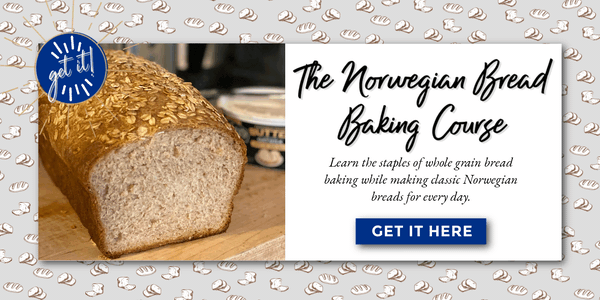I remember when I first became vegan and started thinking about all the dishes I had grown up with that I would no longer be able to enjoy. Come to think of it, most traditional Norwegian foods have either meat, fish, dairy or eggs in them.
But as I started researching, experimenting and speaking with other vegans, I quickly realized that no animals are needed to re-create the same flavors as the ones I had grown up with.
In fact now, over 4 years eating plant-based diet, I have been able to make anything I want to eat that reminds me of home. Karbonader is one of the latest meals I tested out. These “meat cakes” are slightly different than the more common Norwegian “kjøttkaker”, in the sense they are bigger, flatter and are mixed with less ingredients. In fact, they are more reminiscent of an American hamburger (although everything is bigger in America so they are not as big 🙂
Traditionally, karbonader are made with ground beef or veal, and perhaps combined with an egg and some sauted onions. You will see it served with caramelized onions and boiled potatoes, and sometimes topped on an open face sandwich and served cold, with onions and perhaps a garnish of fresh curly parsley.
The word ‘karbonade’ can refer to both the ground meat mixture and the finished dish, and according to earlier Norwegian regulations, were not to contain more than 6% fat.
The word ‘karbonade’ is also used in association with seafood, for instance ‘fiskekarbonade’, which is made with roughly chopped and churned ingredients, rather than the finely ground meat used in ‘fiskekaker’.
In the old days, karbonader were regarded as a special meal reserved for Sundays or holidays, not everyday food, because the ingredients were pricey and difficult to get access to. The word originates from the Italian word carbone/carbonata, a disc of meat cooked over hot coals.
I decided to try making these meat ‘cakes’ yesterday for Sunday supper, but I was also super excited about making the side dishes that go with it. I chose to make the classic mashed peas, potatoes (I chose to make mashed potatoes here even though most Norwegians will eat plain boiled potatoes), stewed and creamed cabbage and cranberry sauce.
Since I don’t have access to ‘tyttebær’, which is the Norwegian berry that makes a similar tart and sweet side sauce, cranberries will work just fine and I made enough to use for Thanksgiving dinner later this week as well.
I chose chickpeas as my ground ‘meat’ and added loads of delicious spices to add into the mixture. I’m happy to report it’s a dish I will make again and again and this is decadent enough to even serve as a Thanksgiving or holiday meal if you want to spice up your table with some Norwegian flavors!
NORVEGAN CHICKPEA KARBONADER
Makes about 9-10 karbonader
About 2 1/2 cups (or around 400g) cooked chickpeas
2 tbsp olive oil
1 medium sweet onion, diced
3-4 garlic cloves, roughly chopped
1 celery stalk, diced
1 red bell pepper, diced
1 large chili pepper, finely minced (remove seeds if you dont’ want it spicy)
2 tsp ground coriander
2 tsp ground cumin
1 tsp smoked paprika
1/4 tsp red pepper flakes
1 tsp oregano
1 tsp garlic powder
1 tsp onion powder
2 tbsp nutritional yeast
1-2 tsp freshly chopped thyme or handful chopped fresh parsley
2 tbsp flour
3 tbsp potato or corn starch
In a medium sauce pan, add the olive oil over medium heat, add the onions, garlic, celery, pepper, and chili with a pinch of kosher salt and all the dry spices and saute for about 5-10 minutes until softened.
Add the chickpeas and sauted vegetables into a food processor along with the nutritional yeast and fresh thyme or parsley and pulse a few times until you have a mixture that holds together slighly. Don’t puree it because you want some whole chickpeas still and pieces of vegetables to create texture.
Pour the mixture into a big bowl and add the flour and potato/corn starch and mix well. Place in refrigerator for about 1 hour while you prepare the sides.
When ready shape into golf size balls and place them onto a baking sheet, flatten them with the palm of your hand. Heat a large saute pan over medium-high heat, add olive oil and saute the karbonder on both sides until golden.
I like to serve it with a little gravy, but traditionally karbonader doesn’t require one. Click HERE if you want to get a recipe for the gravy I used.

KÅLSTUING (Creamed Cabbage)
1 medium head of cabbage, shredded
4 cups (1 liter) water
1 tbsp salt
4 tbsp vegan butter
4 tbsp flour
about 1 3/4 cup (400 ml) broth/water from the cooked cabbage
3/4 cup (200 ml) plant based milk
1/4 tsp ground nutmeg
salt and pepper to taste
Place the shredded cabbage in a large pot with the water and cook for about 15-20 minutes until cabbage has softened.
Drain the water from the cabbage then in another large pot, heat up the butter on mediu heat, whisk in the flour and then slowly add in the cabbage broth and milk until you have a desired saucy consistency.
Let the sauce cook for about 5 minutes or so, then add in the nutmeg, some salt and pepper. Add in the cooked cabbage and combine well and taste for additional seasoning. Serve warm with the karbonader.
ERTESTUING (Mashed Peas)
2 cups (5 dl) frozen peas, thawed
1 heaping tbsp vegan butter
2 tsp salt
1 tsp sugar
splash of plant based milk
Heat all ingredients up in a small pot, then mash lightly with a potato masher. Serve warm.
POTETMOS (Mashed Potatoes)
Serves 4
4 large Yukon gold potatoes, peeled and quartered
2-3 tbsp vegan butter, room temperature
1/4 cup non-dairy milk, room temperature
salt and pepper to taste
Place potatoes in a pot of salted water, bring to a boil and simmer for about 15-20 minutes until potatoes are soft. Drain the water off, add in the vegan butter and milk, season generously with salt and pepper and mash with a potato masher until smooth.
Garnish with chopped chives if you’re fancy 🙂
CRANBERRY SAUCE
Serves 8
4 cups fresh or frozen cranberries
1 cup (2.5dl) sugar
1 cinnamon stick
3-4 whole cloves
1 strip orange or lemon zest (optional)
splash of water
Bring all ingredients to a gentle boil in a medium pot, then reduce to a simmer and cook for about 20 minutes or so until sugar dissolves and berries are soft. Cool off.




Thanks a million for posting these! I have been trying to find more vegan based and vegan inspired vegan recipes! My mother’s father’s family was from Norway and really want to travel there someday before I die! I have tried a few vegan sides and posted them on my blog a while back but these are GREAT! I printed your recipes out and am going to try at least a few of them sooner than later 🙂 Thanks again!
Hi Jennifer! So glad you came across my blog, happy to have you here! Hope you will keep checking in as I continue to veganize Norwegian food. Also if you are on FB, I post daily on my page Arctic Grub about Norway, including travel tips, about our culture and traditions and of course recipe tips! 🙂
Thanks so much! Can’t wait to check out more!
Hi Sunny, I am definitely not a vegan, so that aspect of your recipes is not a necessity for me, but your version of karbonader looks very good with some interesting ingredients. Good job! The stewed peas I grew up with were always made from dried (or canned peas), so I don’t know what they would be like based on essentially fresh peas, but definitely worth a try. The stewed cabbage for me – from Oslo – was always made with cabbage chunks, not greated, but the flavor should be the same. Fun stuff, Sunny!
Harald in Erie, PA
Til info: Tyttebær heter “Lingonberry” på engelsk.
yes I know 🙂